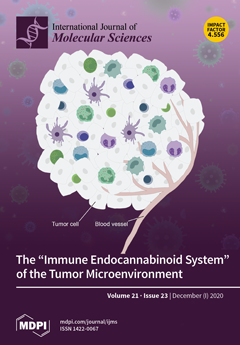Open AccessReview
The Contribution of Endothelial Dysfunction in Systemic Injury Subsequent to SARS-Cov-2 Infection
by
Jessica Maiuolo, Rocco Mollace, Micaela Gliozzi, Vincenzo Musolino, Cristina Carresi, Sara Paone, Miriam Scicchitano, Roberta Macrì, Saverio Nucera, Francesca Bosco, Federica Scarano, Maria Caterina Zito, Stefano Ruga, Annamaria Tavernese and Vincenzo Mollace
Cited by 27 | Viewed by 5191
Abstract
SARS-CoV-2 (Severe Acute Respiratory Syndrome Coronavirus 2) infection is associated, alongside with lung infection and respiratory disease, to cardiovascular dysfunction that occurs at any stage of the disease. This includes ischemic heart disease, arrhythmias, and cardiomyopathies. The common pathophysiological link between SARS-CoV-2 infection
[...] Read more.
SARS-CoV-2 (Severe Acute Respiratory Syndrome Coronavirus 2) infection is associated, alongside with lung infection and respiratory disease, to cardiovascular dysfunction that occurs at any stage of the disease. This includes ischemic heart disease, arrhythmias, and cardiomyopathies. The common pathophysiological link between SARS-CoV-2 infection and the cardiovascular events is represented by coagulation abnormalities and disruption of factors released by endothelial cells, which contribute in maintaining the blood vessels into an anti-thrombotic state. Thus, early alteration of the functionality of endothelial cells, which may be found soon after SARS-CoV-2 infection, seems to represent the major target of a SARS CoV-2 disease state and accounts for the systemic vascular dysfunction that leads to a detrimental effect in terms of hospitalization and death accompanying the disease. In particular, the molecular interaction of SARS-CoV-2 with the ACE2 receptor located in the endothelial cell surface, either at the pulmonary and systemic level, leads to early impairment of endothelial function, which, in turn, is followed by vascular inflammation and thrombosis of peripheral blood vessels. This highlights systemic hypoxia and further aggravates the vicious circle that compromises the development of the disease, leading to irreversible tissue damage and death of people with SARS CoV-2 infection. The review aims to assess some recent advances to define the crucial role of endothelial dysfunction in the pathogenesis of vascular complications accompanying SARS-CoV-2 infection. In particular, the molecular mechanisms associated with the interaction of SARS CoV-2 with the ACE2 receptor located on the endothelial cells are highlighted to support its role in compromising endothelial cell functionality. Finally, the consequences of endothelial dysfunction in enhancing pro-inflammatory and pro-thrombotic effects of SARS-CoV-2 infection are assessed in order to identify early therapeutic interventions able to reduce the impact of the disease in high-risk patients.
Full article
►▼
Show Figures






